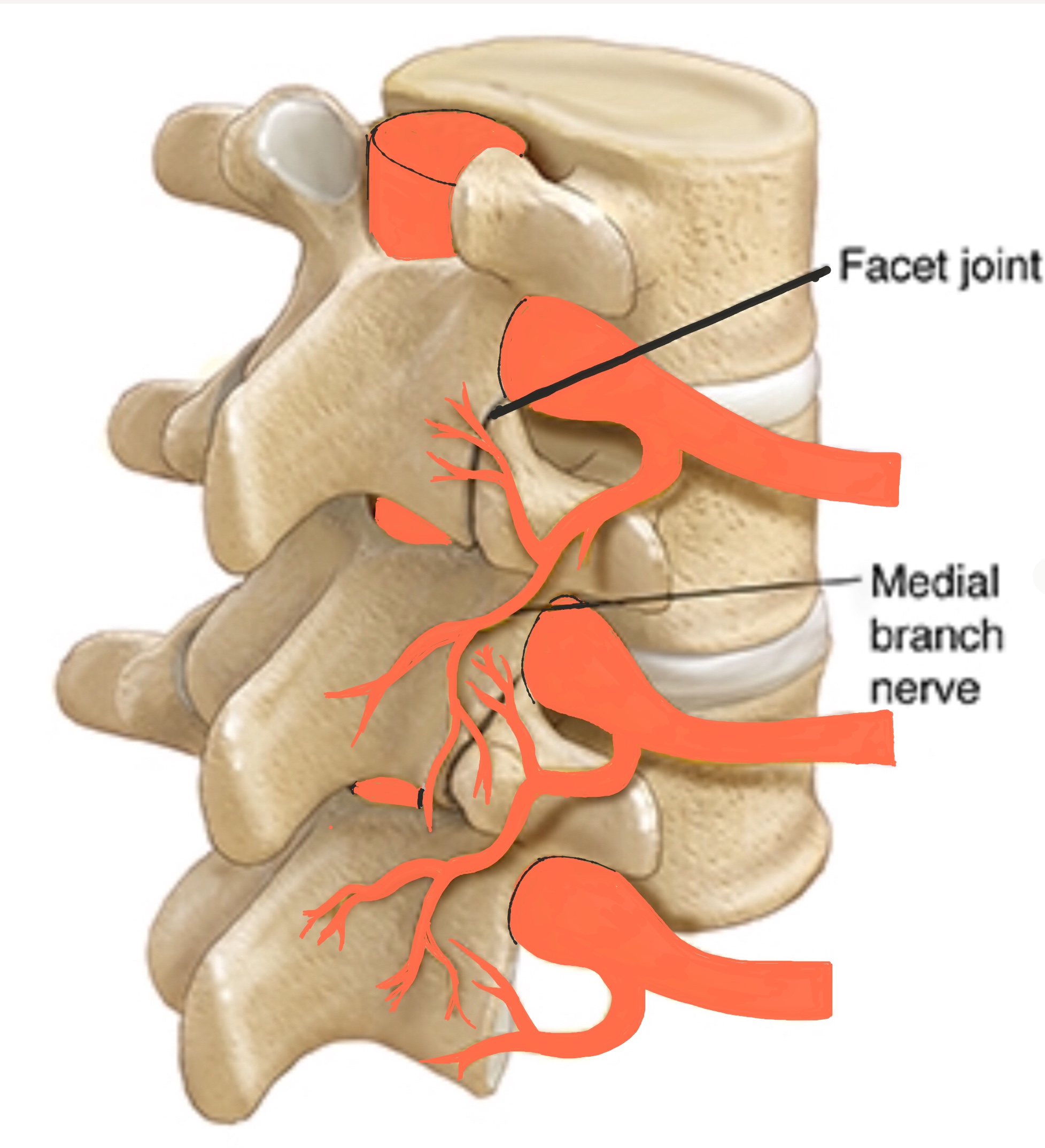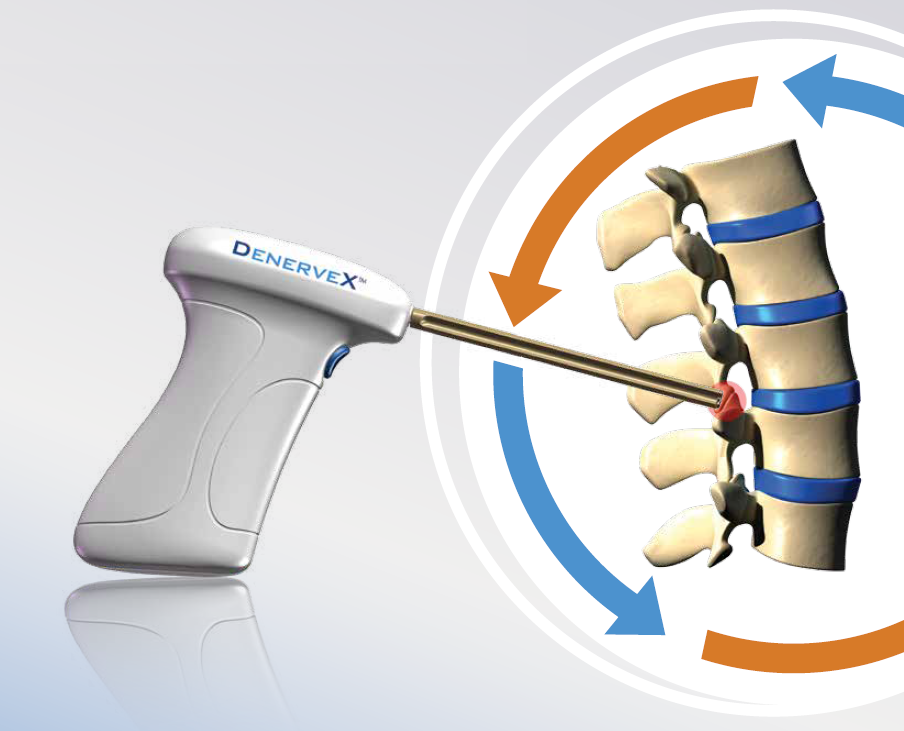Facet joint denervation is a minimally invasive procedure that can be used to treat back or neck pain that is caused by degeneration, arthritis or injury to the facet joints.
This procedure is also called Rhizolysis, Radiofrequency Facet Denervation and Radiofrequency Neurotomy.
Facet joint denervation is a specialised injection, which uses heat to alter the function of the medial nerves that supply the facet joints in your back. These nerves transmit the pain signals from these joints to your brain
What are facet joints?
The vertebrae in the spine and the intervertebral discs are surrounded by muscles which are called the ‘core muscles’. Between each vertebrae has a pair of joints which are mobile, interlock with each other and have some of the core muscles attaching to them; these joints are called the ‘facet joints’ The facet joints slide over each other allowing the spine to bend and twist. Like all joints, both joint surfaces are coated with cartilage.
A small capsule surrounds each facet joint and provides a lubricant for the joint and contains nerve fibres called the ‘Medial Branch Nerves’ that send pain signals to the brain from the facet joints when there is irritation or inflammation.
Facet joint injections and medial branch blocks are used as a both a treatment and as a diagnotistic tool. The steroid part of the injection helps to reduce pain and inflammation within the spine. The local anaesthetic part of the injection serves as the diagnostic tool and helps to confirm, or exclude, that the pain is originating from the facet joints and not, for example, the hips or elsewhere in the spine.
If you get a significant relief of pain following theses injections/blocks but it is only short-lived, facet joint denervation maybe considered.

The diagram demonstrates how the medial branch nerves innervate the facet joints.

How is the procedure carried out?
Facet joint Denervations are day case procedures that are performed in theatre under sedation and using X-ray guidance, in a similar way to the facet joint injections and medial branch blocks.
Facet joint denervation is performed by placing special needles alongside the medial branch nerves that innervate the facet joints, then passing an electrical current through each needle. This creates heat at the needle tip, which results in a change to the structure and function of the nerve and this should lead to a reduction of pain.
Risks and Complications of Facet Joint Denervation
The risks associated with this procedure are:
- stiffness or pain after the procedure (can last up to a few weeks)
- minor bleeding (this risk is increased in patients with bleeding disorders or taking blood thinning medication)
- a small risk of feeling faint during or after the procedure
- bruising at the site of where the needle is inserted
- infection – this rare: 1 in 1000 cases
- temporary nerve injury – this is rare: 1 in 1000 cases
- Permanent damage to the nerves supplying arms or legs – very rare: 1 in 30, 000 cases
- failure to relieve your pain
- recurrence of your pain
- DVT/PE – very rare
Outcomes
The aim of the treatment is to give you a good level of pain relief however you are unlikely to be completely pain-free. About 70% of patients (7 out 10 people) will get a successful result from facet joint denervation and they should experience at least 50% pain relief.
Recovery
Following the procedure you may experience some localised pain over the site which should ease over the following 2 weeks with simple painkillers. You should listen to own body, be sensible and mobilise and exercise as pain permits.
Physiotherapy
Hopefully the procedure will be successful and you should be more comfortable and able to start physiotherapy or a exercise regimen that involves conditioning, core and postural stability exercises.


